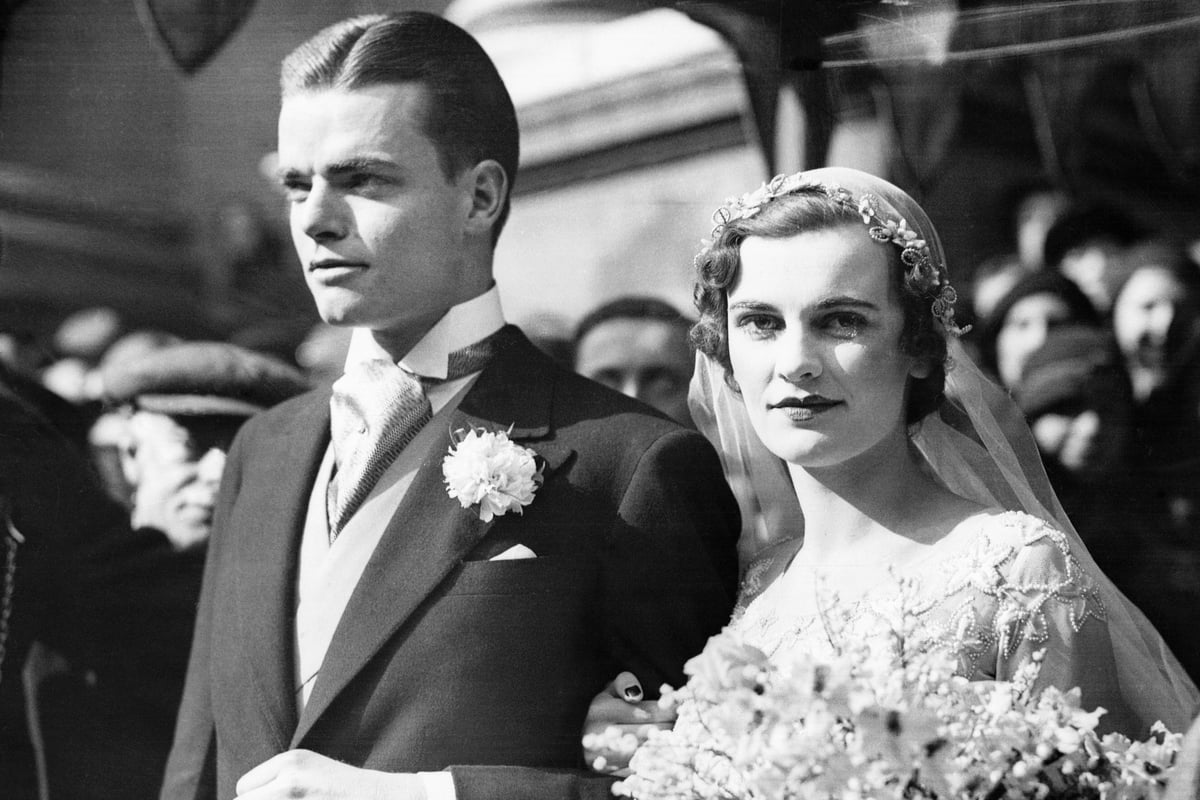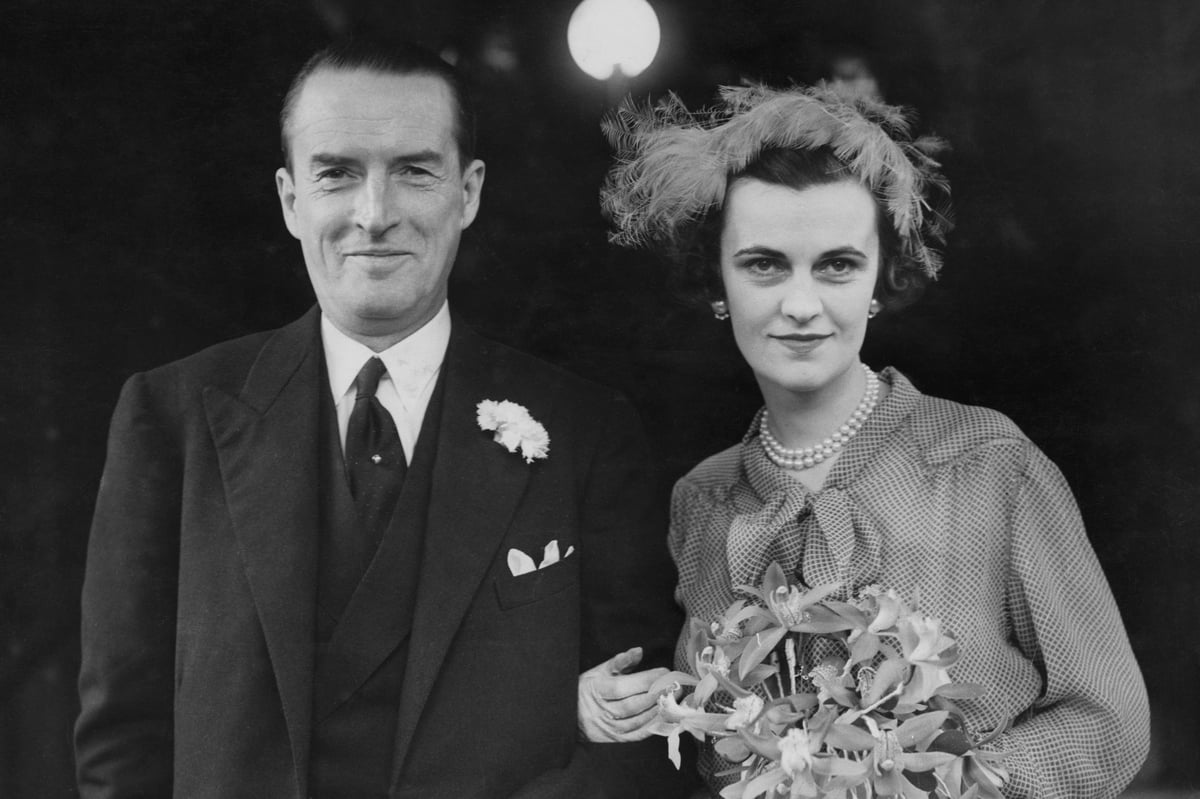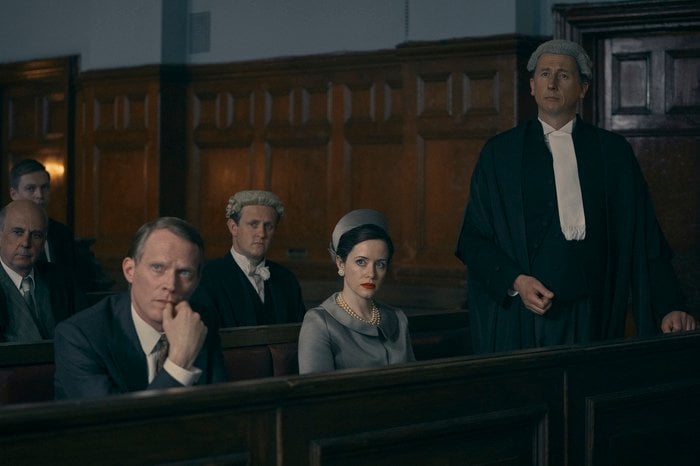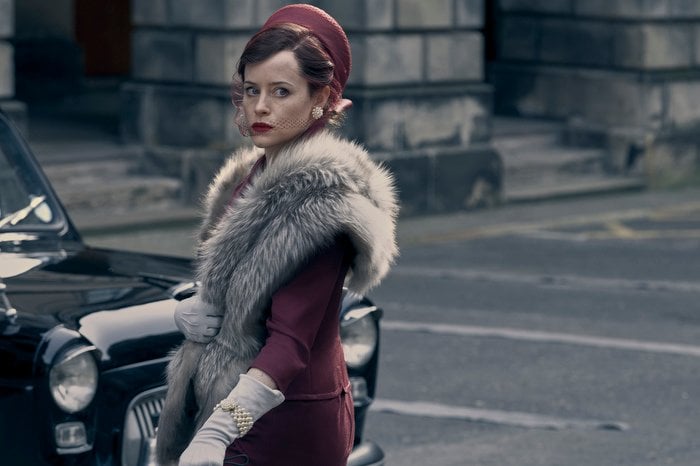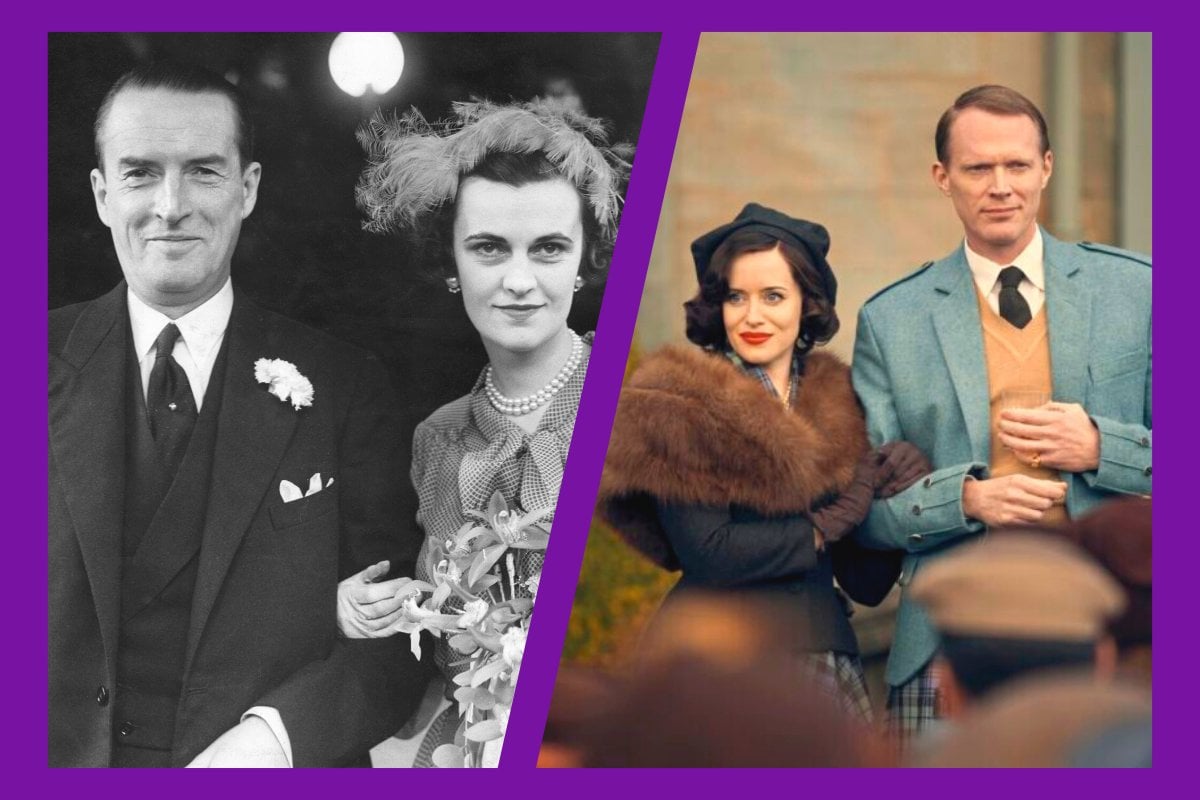
In Amazon Prime Video's A Very British Scandal, Claire Foy as the Duchess of Argyll is rarely seen without her signature three-strand pearl necklace.
The status symbol represented her character, a glamourous heiress with a love for the finer things in life, perfectly. It also became her downfall.
The three-part series is based on a true story about the marriage and divorce of the Duke and Duchess of Argyll in 1960s Britain, which was labelled by the BBC as "one of the most notorious, extraordinary and brutal legal cases of the 20th century".
Watch: The trailer for A Very British Scandal. Post continues below video.
It's a tale of revenge porn, sl*t-shaming and feminism, with the details of a toxic marriage laid bare across tabloids and around dinner tables.
A Very British Scandal stars Claire Foy and Paul Bettany as the infamous couple, in a dramatised series that stays mostly true to the real life tale.
Here is the true story behind the series.
Who was Margaret Campbell?
Ethel Margaret Whigham, known best by her second name, was born in 1912 to Scottish millionaire businessman George Hay Whigham and his wife Helen Mann Hannay.
She spent the first 14 years of her life in New York City, before returning to the UK. As a wealthy heiress, she quickly became a highly sought after member of London's high society.
At 15, she became pregnant by future actor David Niven and was taken to a London nursing home for a secret abortion.

